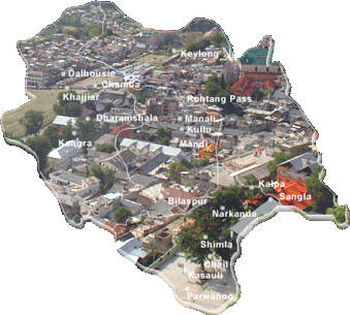Himachal Pradesh has become a pioneer State in implementation of UN Environment Project to conserve the rich biodiversity of the state. The basic objective of this Global Environment Funded Project is to increase the institutional, individual and systemic capacities of stakeholders on Access and Benefit Sharing basis.
Being implemented in ten states of the country, Himachal Pradesh has taken a lead in formulating the Biodiversity Management Committees in different Gram Panchayats, and creating awareness among the different stakeholders particularly the representatives of Panchayati Raj institutions in the State. About 366 such management committees have been constituted and focus is being given on most biodiversity-rich districts such as Chamba, Kullu, Shimla, Sirmour, Kinnaur and Lahaul-Spiti in the first phase.
Focus has also been given on capacity building of stakeholders by organizing training and awareness workshops upto grass root level. So far, about 150 awareness and training programmes have been organized to empower the stakeholders. About Rs. 2.32 crore has been received for such activities under the project.
The State government has constituted a State Biodiversity Board under the Chairmanship of the Additional Chief Secretary Environment to the government of H.P. with a view to effectively implement the provisions of the Biological Diversity Act-2002. The act provides for conservation of diversity, sustainable use of its components and fair and equitable sharing of the benefits arising out of the use of biological resources, knowledge and for matters connected herewith and thereto in the state.
The biodiversity management committees have taken an initiative to document all the biological diversity available in the respective areas including the traditional knowledge by way of preparing People’s Biodiversity Registers. So far at least 6 People’s Biodiversity Registers have been prepared and work on preparation of about 117 such document registers are in progress in different districts of the State. Leading research universities of the State have also associated in this documentation exercise.
Himachal Pradesh is bestowed with a rich biodiversity and at present, the flora of the State consists of about 180 families comprising about 1038 genera and about 3400 species. Many of the plant species found in the State are of rare in nature which makes this floristic richness even more important. The age-old traditional values attached with the various medicinal plants have gained tremendous importance in the present century as the industries are increasingly using natural ingredients in their products, and these natural ingredients include extracts of many medicinal plants.
During the last decade, this State has attracted many industries and a number of bio-resource based industries have been set up in the State. There is a scope to further invest in bio-resource based industries because the State endowed with rich plants, animals and microbial biodiversity. There are many rare plants particularly in the upper region of Himalayas, which have immense potential for use in the pharmaceutical industry.
Biological sources of the State make it an ideal destination for the investment in industries. The State has enough land for industries with the facility of affordable electricity throughout the year. Water mostly from the natural perennial sources fed by rivers and snow melting is in abundance.
The awareness campaign and concerted efforts of the State Biodiversity Board launched to conserve the rich biodiversity with the active participation of the stakeholders certainly will go a long way in creating a mass movement in saving the rare plants and species, as about 60 medicinal plant species are facing a threat of extinction.





